How to solve a problem like Ireland?
Key events leading to the Act of Union
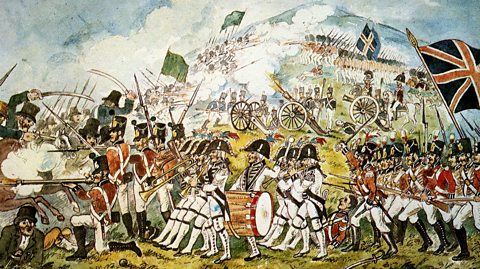
- In 1798, the United IrishmenEstablished in 1791 and greatly influenced by the French Revolution, the aim of the United Irishmen was to ensure the removal of English control through a union of Catholics, Protestants and Dissenters (Presbyterians). failed to overthrow English control over Ireland, an event which deeply shocked and angered the government in London.
- It was the second time in the space of two years that the group had planned a rebellion.
- In doing so, they had hoped to bring about a French invasion of Ireland while Britain was at war with France.
- Prime Minister William Pitt had already been considering how to bring Ireland under greater control. The rebellion convinced Pitt he now had to act.
- PittÔÇÖs plan was to close the Irish Parliament and bring Ireland under the direct control of the Parliament and government in London, with the kingdom of Ireland being unified with that of Scotland, England and Wales ÔÇô to create a United Kingdom.
- When this Union was first proposed it was favoured by the leadership of the Catholic community and opposed by the Presbyterians of Ulster, many of whom still clung to the ideals of the United Irishmen.
- Over the course of the next century these positions would almost completely reverse.

What did the Act of Union mean for Ireland?
- The Act of Union, took effect on 1st January 1801; it meant that Ireland no longer had a Parliament or any independence.
- Ireland would be governed in the same way in which Wales and Scotland were ruled, from Westminster.
- Ireland got to send 100 MPs to the House of Commons, in Westminster, though there were significant restrictions on who could vote for MPs.
Watch: The Act of Union and Ireland
Watch as Max Heartrate gices us a quick run through of The Acts of Union
DIRECTOR: Standby on the floor.
DIRECTOR: Coming to you camera two.
DIRECTOR: Cue on two.
DIRECTOR: Mix-through.
MAX: No time for that! Hello! Im Max Heartrate and this is Knowledge Express. Information faster than a rabbit on a rollercoaster. And todays topic is.
MAX: Right. The Act of Union. Actually, the Acts of Union
MAX: (there were two of them)
MAX: Parallel acts of the Parliament of Great Britain and the Parliament of Ireland, united the Kingdom of Great Britain and the Kingdom of Ireland to create the United Kingdom of Great Britain and Ireland. Dedah! Simples! But why?
MAX: Well, itÔÇÖs the 1790s and power in Ireland is restricted to a small minority: the Protestant Anglo-Irish. The Catholic majority are frustrated at the lack of reform. They want equality and they want it now! I mean look at France - libert├®, ├®galit├® et fraternit├®. Freedom, equality, brotherhood. How do you like them apples?
So, in a nutshell the Irish have their own revolution in 1798 and the French pop across to give a hand. As is traditional with Irish rebellions the British government kill it off using overwhelming force.
MAX: But it makes them think. WhatÔÇÖs more, Catholic emancipation (i.e. freedom from discrimination) is being discussed in Britain, and theyÔÇÖre worried. Perhaps a newly liberated Catholic majority will change the character of the Irish government and parliament. ÔÇ£I know, letÔÇÖs merge parliaments. ThatÔÇÖll put an end to that. We should probably put the old Catholic equality thing on the go slow as well in case the Protestants create too much of a fuss. DonÔÇÖt want to rock the boat what?ÔÇØ So, there you go, two parliaments become one, everyone happy?
MAX: NO! The Union remains a source of bitterness to the Catholic Irish who see their dreams of immediate emancipation disappear and are left to wonder exactly what was going on or as we might say ÔÇ£Houl on, whatÔÇÖs the craic here?ÔÇØ
Why did the Catholic position change in the 19th century?

There wasnÔÇÖt much opposition from IrelandÔÇÖs Catholic leadership to the end of the Dublin Parliament because:
- all of its members were members of the Church of Ireland.
- while some Catholics in Ireland had been given the right to vote in 1793, they were still not able to be MPs.
- Pitt had promised that the right of Catholics to be MPs would follow the Act of Union. This would happen through a process called EmancipationThe removal of restrictions on Catholic involvement in politics. After the introduction of the 1829 Catholic Emancipation Act, Catholics were able to sit in Parliament as MPs..
Overall, Catholic leaders saw the Union as an opportunity rather than a threat and were generally supportive of it.
However, when Pitt tried to introduce Emancipation, King George III (1760-1820) and some of his ministers refused their support. Pitt resigned and so Emancipation did not happen.
This caused a lot of anger among those who thought that the Union might be a chance for change.

Catholic Emancipation and Repeal campaigns
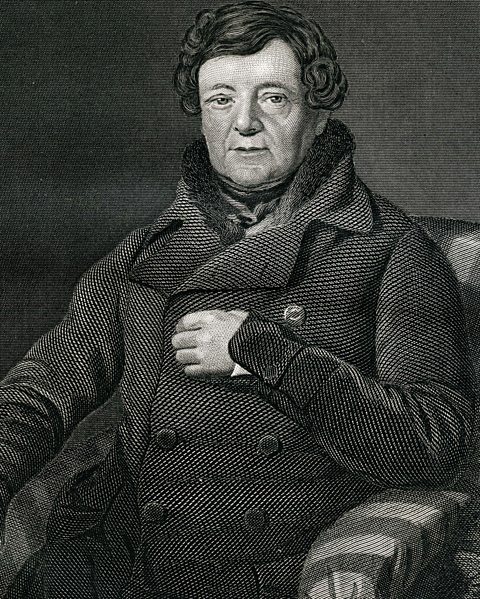
Catholic Emancipation was not granted until 1829, following a successful campaign by Irish lawyer Daniel OÔÇÖConnell. OÔÇÖConnell was hugely popular and organised the Catholic poor into a powerful political force. His campaign was backed by the Catholic Church, but it also had support in Westminster.
In the 1840s OÔÇÖConnell mounted the first challenge to the Union with his RepealRepeal means to reverse a law - in this case the Act of Union. campaign. Despite attracting over 500,000 supporters to a mass meeting at Tara and once again having the support of the Church, this campaign was unsuccessful. Unlike Emancipation, Repeal had few supporters in Westminster.

Famine
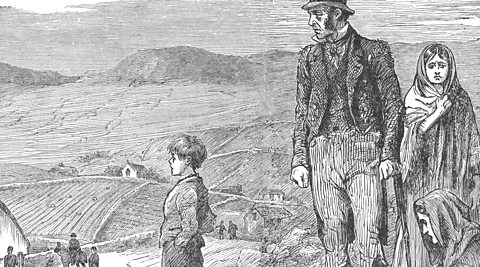
However a significant event in the 1840s would turn the Catholics of Ireland against the Union and help create a popular Irish NationalismIn Ireland, nationalism refers to those who want to weaken or end the Union with Britain. .
The Great Famine or Gorta M├│r (Great Hunger) occurred between 1845 and 1848. The greatest human catastrophe ever to happen in Ireland, it had a disastrous impact on the country:
- over one million people dying of hunger-related illness
- a similar number emigrated to America and the industrial towns of Scotland and England.
Consequences of the Famine
Aside from the human cost, the Famine created a lot of anger. This anger was directed towards:
- the mainly Protestant landlords, many of whom had family connections with England.
- the British government, for its lack of action to solve the crisis.
The dreadful nature of this shared experience among the poor, who were mainly Catholic, turned them against the British government who they felt had abandoned them and created a long lasting resentment.
They now associated the Union with the Famine. This association turned into mass support for those that wanted to see an end to the Union.

Home Rule
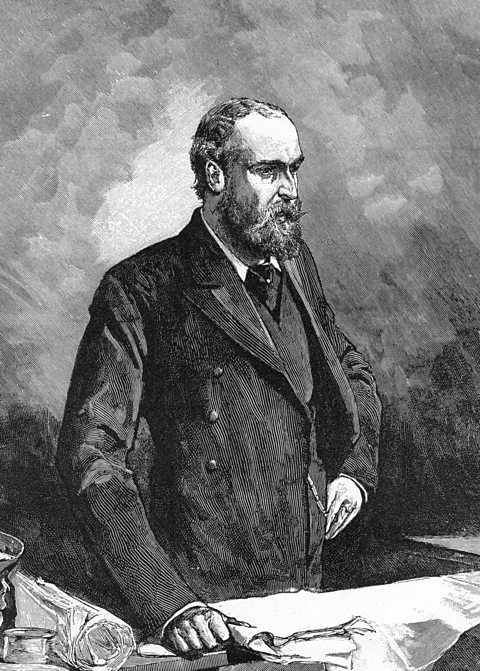
In 1870 a new political party the Irish Parliamentary Party (IPP) emerged. Its goal was to re-establish an Irish parliament to take control of Irish domestic affairs. At the same time, Westminster would continue to look after matters such as finance and foreign policy. This plan was known as Home Rule.
Key points about Home Rule
- The IPP was eventually led by Charles Stewart Parnell, an extremely skilful politician. Although both a Protestant and a landlord, Parnell was enormously popular among the Catholic poor.
- At one stage the IPP had 86 MPs in the House of Commons. It was a very strong movement and helped put the issue of Ireland at the centre of British politics.
- Home Rule seemed a strong possibility despite the fact that it was defeated twice in Parliament in 1886 and 1893.
However, there were other, much smaller groups who still clung to the ideas of violent rebellion as a way to end the union. In 1867 a group called the Fenians planned a rising that barely lasted for 24 hours. Many of them were imprisoned but others were exiled to the United States, where they continued to plot for armed rebellion in Ireland.

Division
The Act of Union began as a plan to increase British control over Ireland and make it less rebellious. In the course of the next 100 years, the Protestant population of Ireland became increasingly associated with support for the Union.
At the same time, the Catholic population took a different journey and reached a place where it saw the weakening of that Union as the way forward.
The religious divide in Ireland therefore became a political divide on the question of the Union. This division would transform Ireland in the first decades of the 20th Century.
Test your knowledge
More on Rights and the Rule of Law
Find out more by working through a topic
- count4 of 6
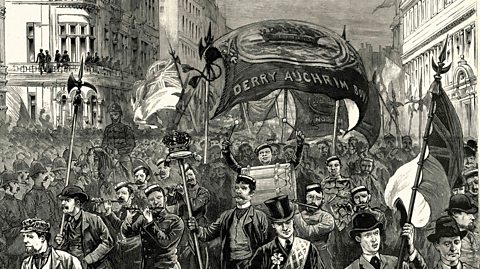
- count5 of 6
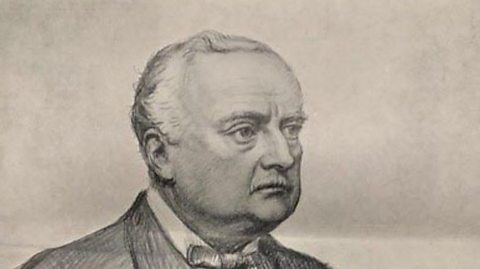
- count6 of 6
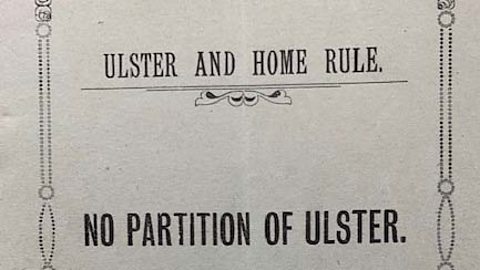
- count1 of 6
